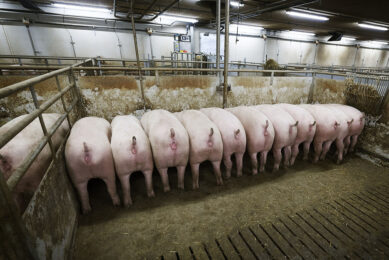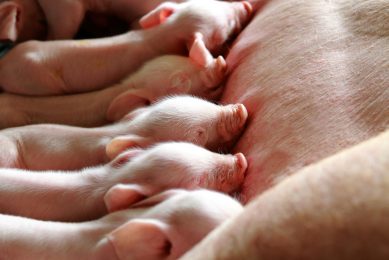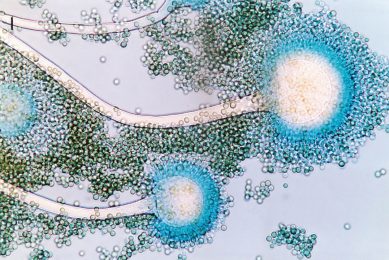The second most cause of enforced culling – Legs!
Foot and leg problems together with lameness are still a major reason why sows have to be removed from the herd in the first 3 parities.
Foot and leg problems together with lameness are still a major reason why sows have to be removed from the herd in the first 3 parities.
The problem definitely starts with the gilt. 40 years ago I was helping to select both bought-in gilts from multipliers, topped up with those available at the local market – the latter not acceptable practice today. Whatever – I selected many hundreds of gilts over 4 years and got quite good at it, as could be expected from such long practice. A real benefit was to be able to follow `my`gilts as sows on our very large 1200-sow farm and learn from my mistakes.
It would take 20 textbook pages to describe how to select a good gilt conformation-wise, here I confine myself to a few key points on legs alone.
General
• Take special care in scrutinizing fast-grown gilts, like 750g/day compared to 550g/day. These are the right gilts to go for but they need extra-special examination (and easing-up before service, but that`s another story).
• Note how she walks. Fluid movement (almost sexy!) Goose-stepping? Out at once!
• If you can, look for any which seem stiff on getting up and down. Reject.
• Nice `springy` pasterns – not `soft` ie. acutely-angled.
• Good base width of both front and rear legs, one at each corner. Reject narrow-set legs.
• Large feet are always best.
Front legs and feet
• Toes big, even-sized. Over 12mm difference – reject.
• Small, narrow toes will be very likely to deteriorate faster. Reject.
• Reject splay feet and the opposite – pigeon-toed.
• Swellings, cracked hooves, foot pad abrasions (if seen), reject.
• Buck knees – reject. This is genetic.
• Nice angle between shoulder and upper leg. Straight down, ie `tippitoes` is bad, they`ll have difficulty getting up and down later in life, especially in stalls. Difficult to describe – you need to be shown this from good and bad side view examples.
Rear legs and feet
• Again, from the side, a nice angle between hip and the two upper leg bones ie. as with the front legs, `tippitoes` (at too straight an angle) is a genetic no-no. They get stiff, especially on concrete. And arthritic?
• Reject straight rear pasterns, the opposite – weak excessively-angled pasterns and sickle hocks. Seen from the rear, turned-in `cow-hocks` are always rejects.
• Reject overlong dew claws, damaged dew claws, cracked and damaged hooves.
• As with the front feet, look for even toes, noticeably well-spaced apart.
Bone strength from the conformation viewpoint
The lower leg bones cross-section of breeding females should not be excessively `aerofoil`, called `fine boned, or too rounded as in a circle, but more of an egg-shape with the egg cut in half vertically, the blunt end forwards in cross-section.
I hope this helps. Practice makes perfect!











